Persian Musical Instruments
Nava Ensemble musicians and guests play a number of original Persian and
non-Persian musical instruments.
Kamancheh
Derived from the Persian words kaman, 'bow' or 'arc', and cheh, 'little'
is an ancient spiked fiddle which is ancestor to most modern European
and Asian bowed instruments. The Iranian classical kamancheh has
a spherical shape, its bridge resting on the surface of a soundbox
covered by a membrane of animal skin. The kamancheh's four metal
strings are generally tuned in fourths or fifths. The instrument
is held vertically and the bow, made of horsehair, moves horizontally,
with the performer rotating the instrument when he or she moves
from one string to another. |
 |
Santur
The Santur is a trapezoid-shaped hammered zither, which is struck with
light wooden hammers. Originating in the ancient Middle East, it
traveled the world from North Africa to Spain, throughout Eastern
Europe, and to China, Korea and Japan. The santur has seventy-two strings
which are arranged on adjustable tuning pegs in eighteen sets of four.
The strings are made of bronze (9x4 in the low register) and steel
(9x4 in the middle register). Each set of four strings creates one single
tone. There are a total of 27 tones available covering approximately three
octaves. The Persian santur is played with two very fine wooden hammers,
sometimes covered with felt, and held with 3-4 fingers. |
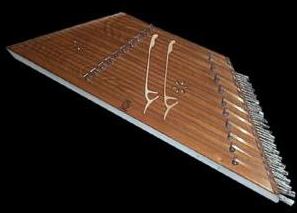 |
Tombak
The Tombak is a goblet-shaped drum carved from solid mulberry wood and
covered at the wide end with lamb or goat skin. It is held horizontally
and played with both hands. The finger technique is extremely elaborate
and consists of rolling and snapping the fingers in various ways
which allow for a great variety of sounds. |
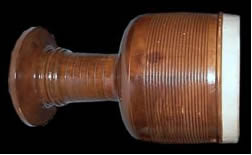 |
Daf
One of the oldest percussion instruments in Iran, Daf consists
of a wooden frame drum with a row of small circular metal hoops
fastened to the inside of its rim, the hoops rattle when the membrane
of the drum is struck. Daf has traditionally been used as the main
sacred percussion instrument in Iran, while its smaller cousine,
Dayereh (popularly pronounced Dariyeh) is used for party
occasions. |
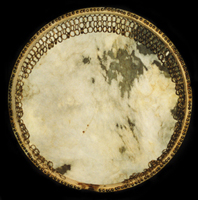 |
Tar
Belonging to the lute family, the tar appeared in its present form in
the middle of the eighteenth century. The body is a double-bowl shape
carved from mulberry wood, with a thin membrane of stretched lamb-skin
covering the top. The long fingerboard has twenty-six to twenty-eight
adjustable gut frets, and there are three double courses of strings.
Its range is about two and one- half octaves, and is played with a
small brass plectrum. |
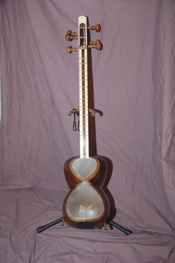 |
Setar
The ancestry of the setar can be traced to the ancient tanbur of
pre-Islamic Persia. It is made from thin mulberry wood and its
fingerboard has twenty-five or twenty-six adjustable gut frets. Setar
is literally translated as ``three strings''; however, in its present
form, it has four strings and it is suspected that setar initially had
only three strings. Because of its delicacy and intimate sonority, the
setar is the preferred instrument of Sufi mystics. |
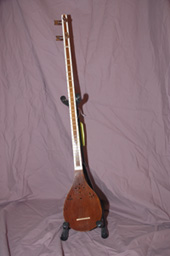 |
|